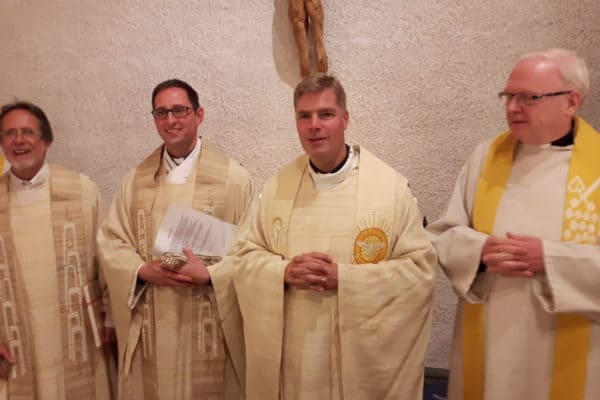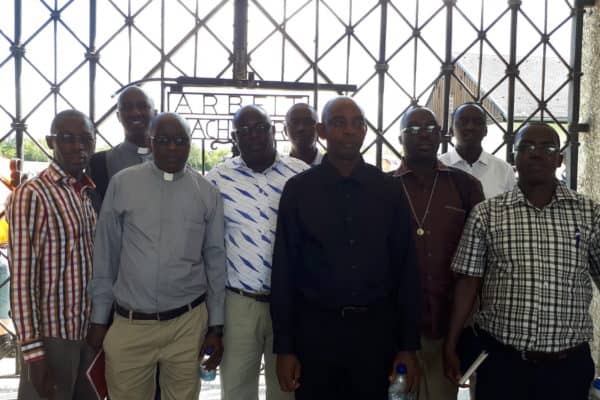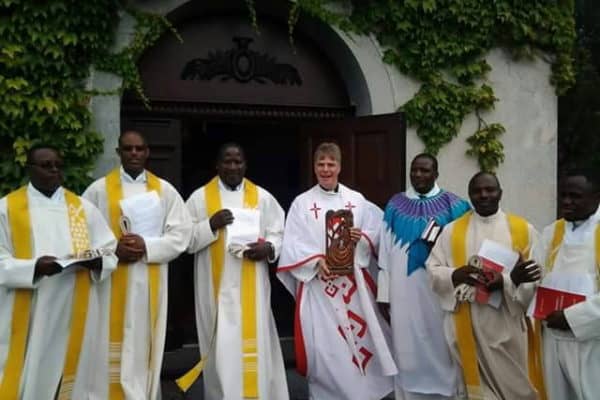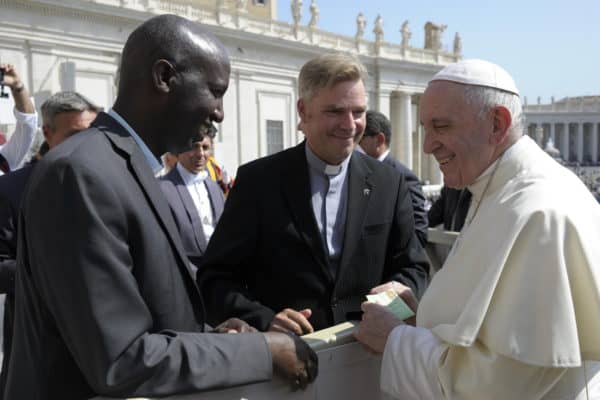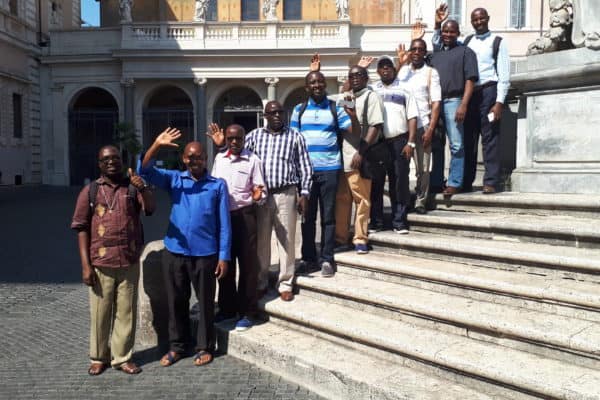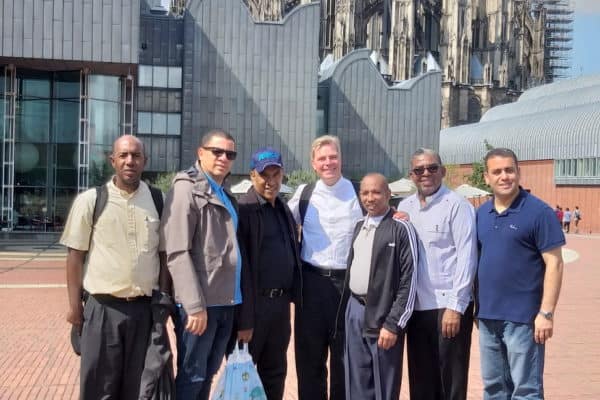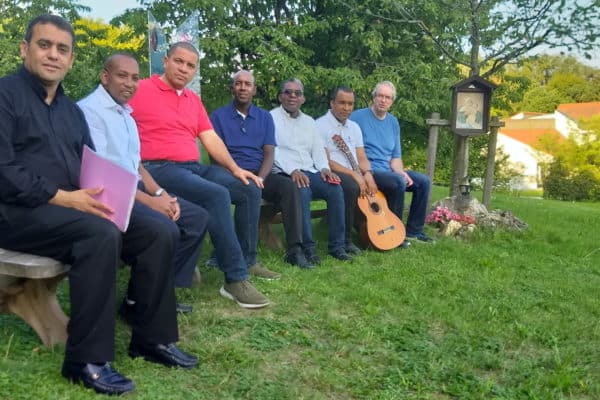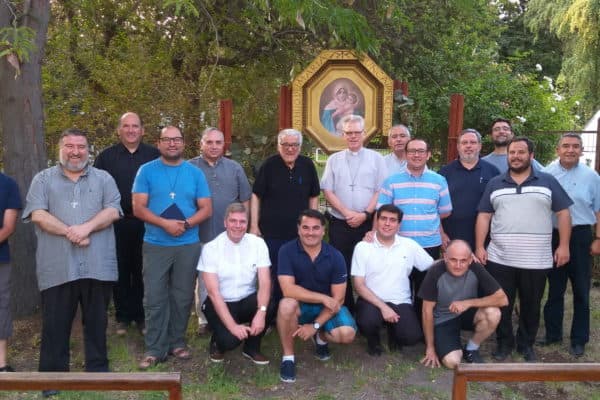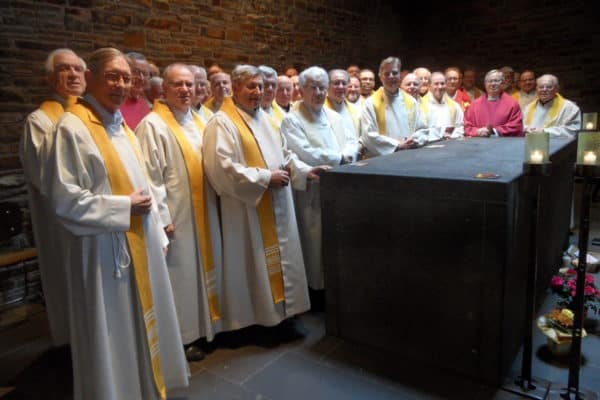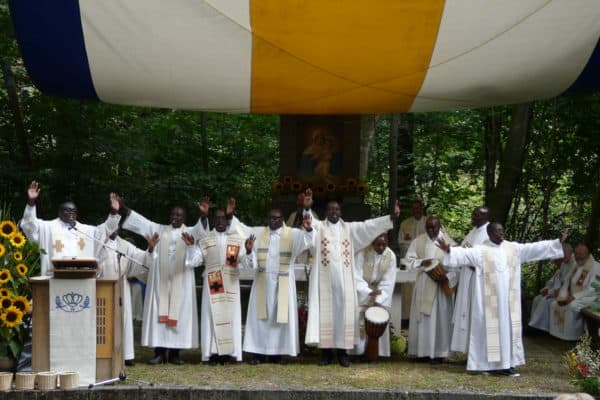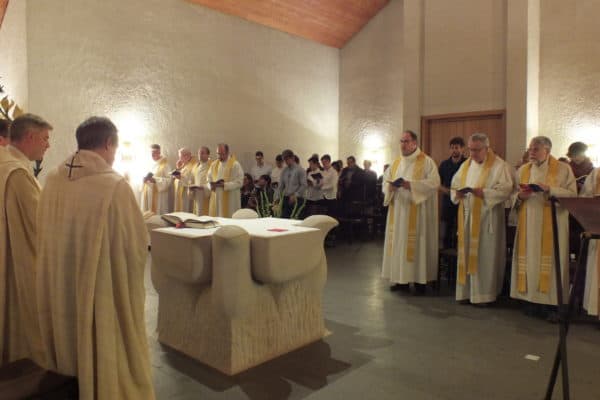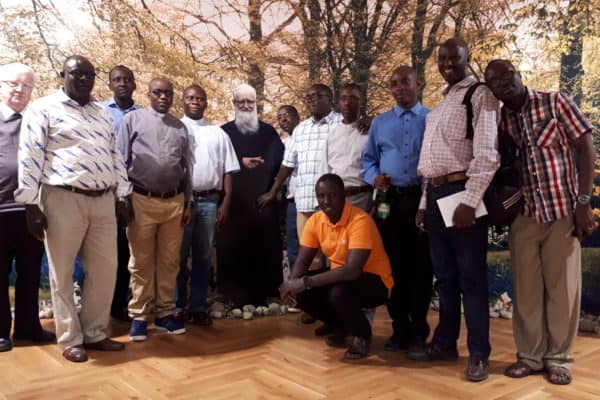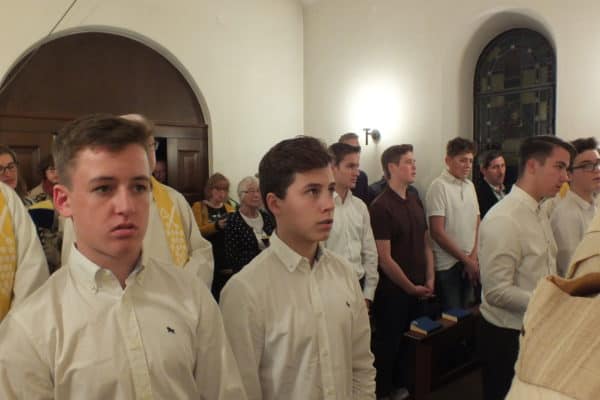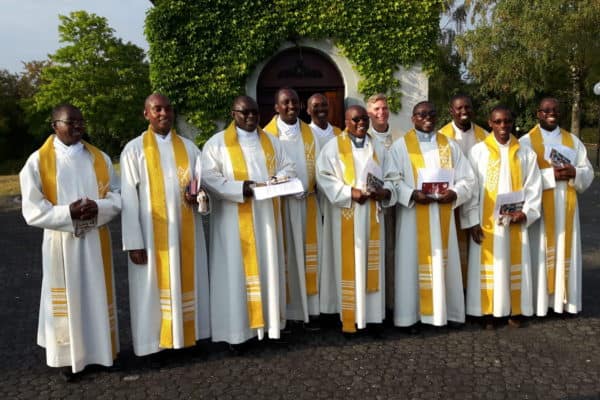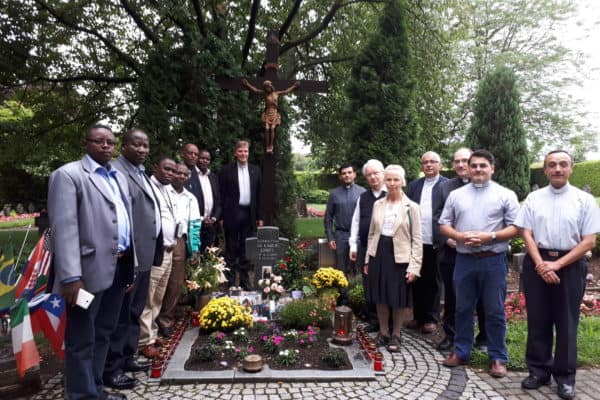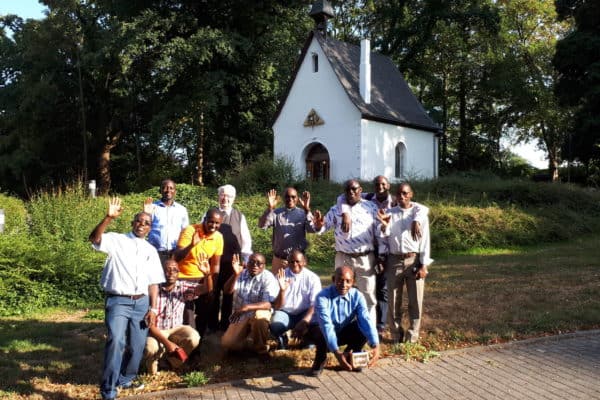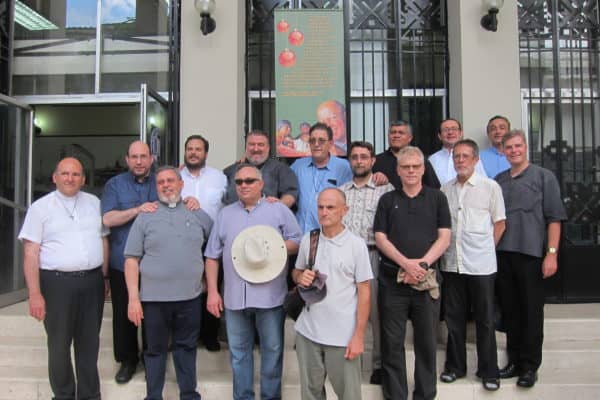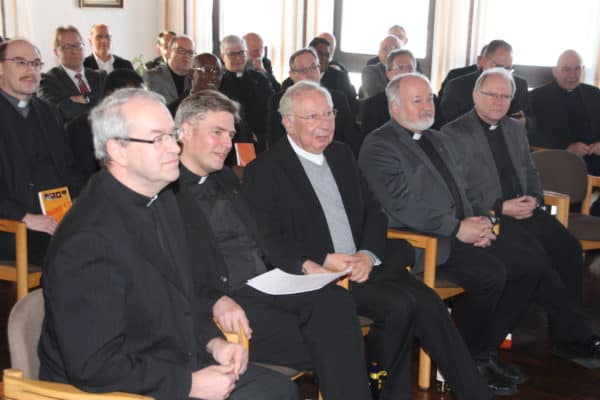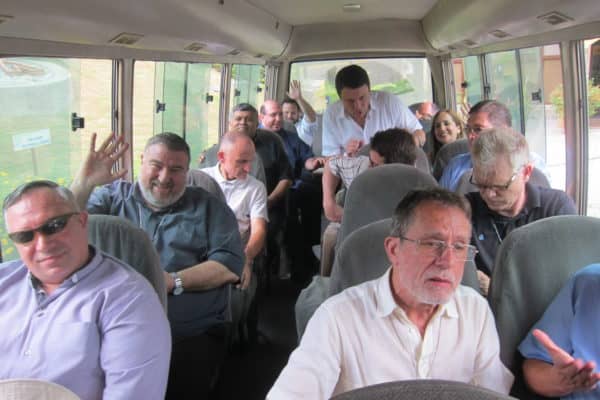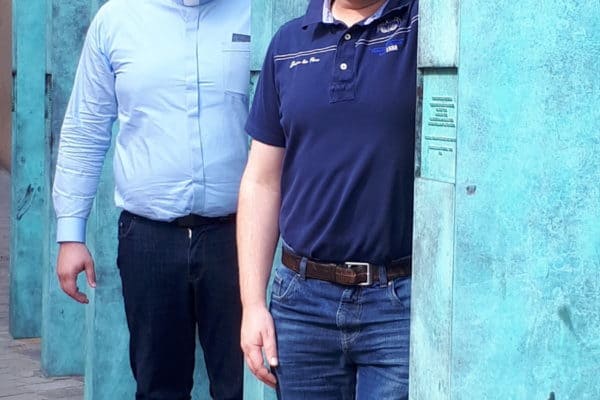Being a priest today, as a member of the Schoenstatt Priests’ Federation as a community within the four Schoenstatt priestly communities.
Priests in a time of new beginnings
It is a time of change. New things are in the offing. Present changes are affecting all areas of life. We have to find our way in a world changed by technology and global communication. We struggle with deeper relationships with each other, including with God. As priests, we face the challenge of communicating the message of Jesus in a way that is true to life in these times. We need to reassure ourselves why and how we want to be priests. In all our current reflections, we may hold fast:
There is only one priest in the new covenant: Jesus Christ. He calls people. Through baptism and confirmation, he gives them a share in his life and in his priestly mission, thus establishing the common priesthood. Through ordination he enables baptized people to the priesthood of service. Through it, he himself wants to be present among people in a special way and to remain effective for life in fullness and for the unity of all. Both forms of the priesthood have an inner relationship which finds its special expression in the celebration of the Eucharist. As a member of the People of God, the priest prays with his sisters and brothers. As representative of Christ, the Head and Shepherd of the Church, he faces the community and acts in the authority of Christ.
Priests today are challenged to re-evaluate this inner center of their vocation and to express it in a contemporary way. Programs and concepts for pastoral work can convince; lived solutions can move.
As members of the four priestly communities in the Schoenstatt Movement (Priests’ League, Priests’ Federation, Priests’ Association and Schoenstatt Fathers), we would like to describe an image of priests that is oriented toward our founder, Father Joseph Kentenich (1885-1968).
Father Kentenich went new ways in pastoral work. He accompanied many priests spiritually. We want to name five characteristic traits of his priestly activity which fascinate us and which we find helpful as orientation.
1. taken by the action of God
For many people of the modern age, God seems to be silent. We priests share this experience with them. We are expected to accompany them on their way to believing that God lives and works today. God’s love and guidance wants to be recognized. In order to perceive this, a believing attitude is needed that counts on God’s presence and activity in this world. The priest should exemplify this attentiveness and encourage it. He needs times of silence and prayer if he is to become familiar with the language of God in the Holy Scriptures, in contemporary events and in the souls of people. It is a matter of always listening, hearing and obeying anew, in order to finally belong completely to God.
In Jesus Christ, God’s action has fundamentally taken place once and for all. Only in Christ is the priest able to make this mystery visible for today. Knowing himself to be touched and loved by God, he can become for others the transparency of Christ who rests at the heart of the Father and has brought word.
The signs of the times are to be interpreted also today, as it is Jesus’ mission. According to the spiritual tradition of St. Ignatius of Loyola, the following is true: seek and find God in all things, people and events. Such a search for traces is urgent today. It must be combined with the gift of discernment in order to recognize what in the great trends and events of the time and in the soul of a person is marked by God’s spirit or determined by the spirit of the adversary. The world needs the prophetic priest to put into words what, according to God’s mysterious providence, is happening today and may become possible tomorrow. His words should clarify, inspire and point forward. Many Christians mourn the things that are no longer possible today. They need the priest who sees the positive signals and makes himself the advocate of a new shape that God wants to create for His Church in today’s social conditions. We experience: Those who develop a sense for God’s action in time can deal well with tradition and at the same time follow new impulses. After all, it is the same Spirit of God who keeps his church true to its origins and at the same time leads it to the height of the times.
2. Serving life
How does pastoral care work today? With the abundance of tasks and expectations, new emphases must be set and cooperation in partnership must be developed. We priests need above all an eye for what really moves people and what serves life. It is necessary to apathetically and reverently take up people’s longing for love, for dignity and truth, in order to lead them on to God, the goal of all human searching. It is a matter of selflessly serving other people’s lives and not relying first on external forms and regulations.
We give confidence, awaken personal initiative and accompany people on their vocational path. In the process of development to a free personality, people often look for someone who can patiently accompany this growth. In these processes, the apostle Paul also allows people to participate in his own spiritual life and thus becomes a father to his congregation.
We perform the ministry of priestly leadership entrusted to us most effectively when our pastoral care becomes first and foremost the cultivation of relationships. In this way, an organism of bonds can grow, and in this way, community comes into being as a living network. People join in and are themselves supported.
This requires a style of leadership that is characterized by a lively approach and participation in a spirit of partnership. We call this attitude of the pastor priestly paternity. It grows where we give great spiritual closeness to those entrusted to us and at the same time maintain a clear external distance.
3. Hope in God’s mercy
We priests perceive failure and guilt in our own lives as well as in people around us. We have to deal with excessive demands and failure, with loneliness and failure. Again and again we experience the tension between ministry and humanity, between ideal and reality. Like Jesus, we may hope in God the Father and rely on his merciful love – for us as well as for others. Our proclamation must open and warm people’s hearts to God’s mercy. And through our kindness, others should be able to experience God’s mercy.
We do not need to cover up our own experience of suffering and weakness and sin. All of this includes the chance to look up and to make ourselves dependent anew on God’s guidance and education. His grace shows its power in our weakness. The apostle Paul sees himself only as an instrument in the hand of a greater one. This certainly includes his own efforts to develop his personality and to strive for holiness. Weaknesses, injuries and also sinfulness will remain in spite of everything. They disturb and humble us in the face of our high priestly vocation and make us trust less in our own talents than in God’s grace. If we accept them with faith, we take the risk of the freedom of the children of God. It is precisely in the experience of our own guilt and weakness that we are called to the ministry of reconciliation. And we may, like Paul, invite: We ask in Christ’s stead: Be reconciled to God.
4. Connected to Mary
Mary stands at the beginning of our Christian journey of faith as the most important witness to the mystery of the Incarnation of God. As the mother of Jesus, she is involved in the origin of our salvation. She participates in the life of her Son. On the cross Jesus referred the disciple whom he loved to her and in him entrusted the entire discipleship to her maternal care.
The spiritual tradition of Marian consecration and the practice of the Covenant of Love with Mary in the spirituality of the Schoenstatt Movement follow on from this. The journey of faith that she preceded all of us invites us to follow.
For our personal life as priests, the attachment to Mary can become helpful. In our closeness to her we grow a culture of life and heart and openness to a Trinitarian piety. Whoever turns to her in love experiences something of the human kindness and cordiality of God.
Experience has shown that the effort for communion among priests receives an influx of mutual spiritual closeness through a loving closeness to Mary. This was already experienced by the young Church, which remained united in prayer with Mary in the Cenacle. From her we learn to open ourselves anew to God’s Spirit and to dare something in his power.
On the other hand, we can expect Mary’s intercession to help us in our pastoral work. No one has a greater interest than she in Jesus’ message reaching the hearts of people. She is the Mother of the Church. Therefore, it is good and meaningful for us to guide people to live in union with her. We trust that a Marian Church will grow in a family-like and fraternal way and will become the soul of a world culture marked by love.
5. Giving one’s life
The Gospel urges a radicality of faith, hope and love. This leads to the meaningfulness of celibacy. This way of life is little understood and shared by many people today, even by Christians. This becomes a question for us.
Only by trusting in God’s call can we succeed in choosing celibacy in freedom. What we priests have to communicate to people does not come from ourselves. It is through us that Christ works, who gives himself away for the growth of the Kingdom of God in this world and through his resurrection directs our gaze to eternal perfection. When we as priests are seized by this mystery, we live for a promising future.
We make Jesus’ way of life our own. It is a prophetic sign of hope in God’s promises and releases forces for undivided dedication to our spiritual family.
In this way, we give time and strength not to one woman and one family as in a marriage, but to all for whom we are sent. We renounce physically lived sexuality, but not spiritual complementation through human relationships, and we unfold the creative power of our sexuality through creative action. It is part of the meaning and beauty of this way of life to live a spiritual fatherhood as a man of God. Whoever is given in this way knows both: passionate commitment, because the love of Christ urges him; but also calm serenity in the hope that the Lord will do the decisive thing and complete everything.
Duc in altum!
“Duc in altum!” A new millennium lies before the Church like a vast ocean to be set out upon, John Paul II called out to us. Where there is communion among priests, where they carry one another humanly and spiritually, the courage to set out grows. Then the characteristic features of a priestly image mentioned here do not remain a pale theory. This is our experience.
In the Second Vatican Council, the Church decided to set out and interpreted itself as a pilgrim people of God. We priests may be the pilgrim guides and take many people with us on this journey. Whoever gives trust in the process, experiences trust. We experience it in the cooperation with the other pastoral professions and with many committed lay people.
The history of Israel and the Church is a history of departures. Will we succeed in setting out like Abraham with a great promise? Or like the scouts who ventured into the yet unknown land of Canaan? The apostle Paul and his co-workers had the experience that God opens doors for the gospel.
We, too, can count on God’s Spirit opening spaces for us and pressing for new forms of pastoral care. Many spiritual awakenings in all denominations encourage us. It is a time of departure, a time of new beginnings!

